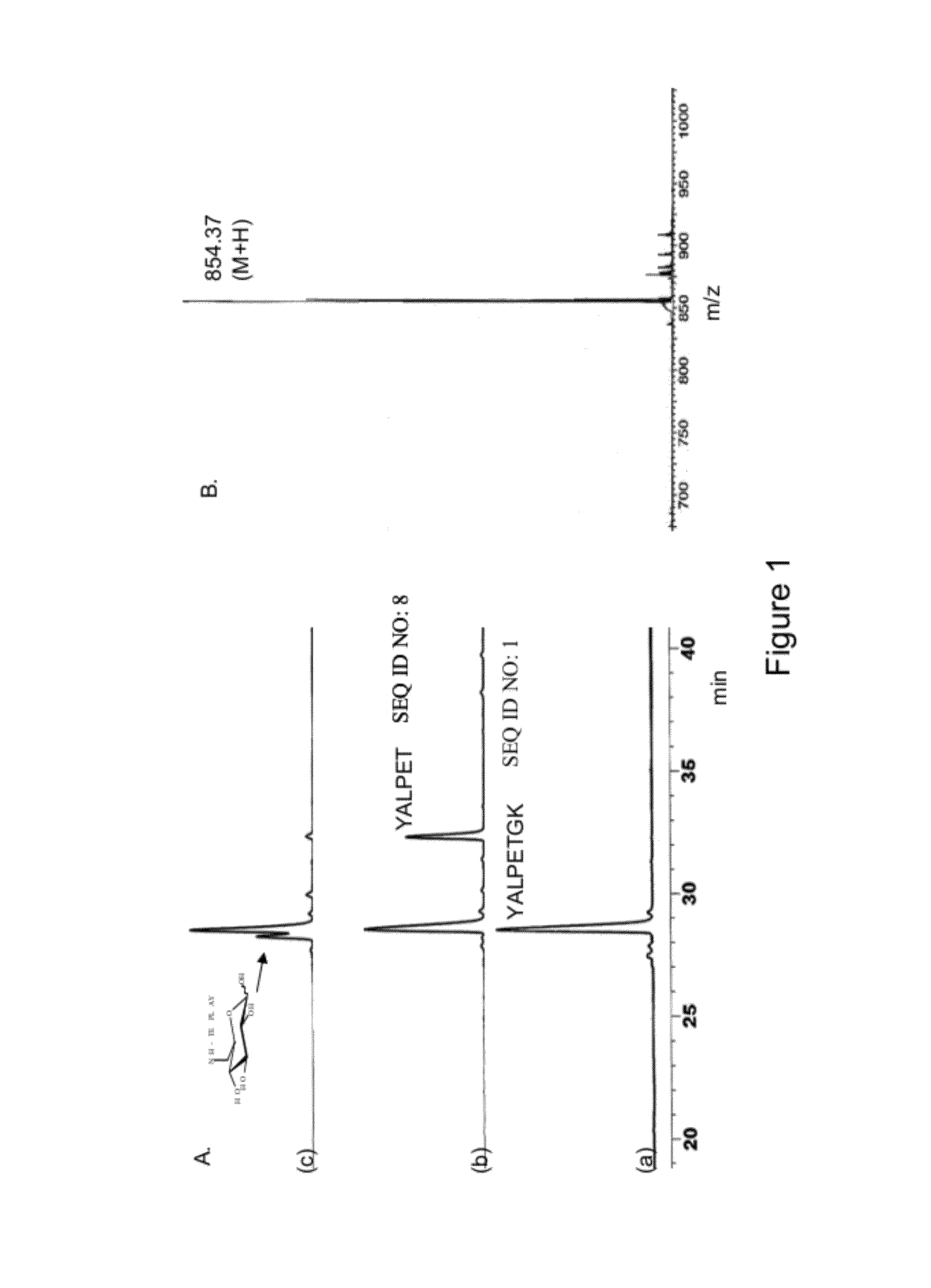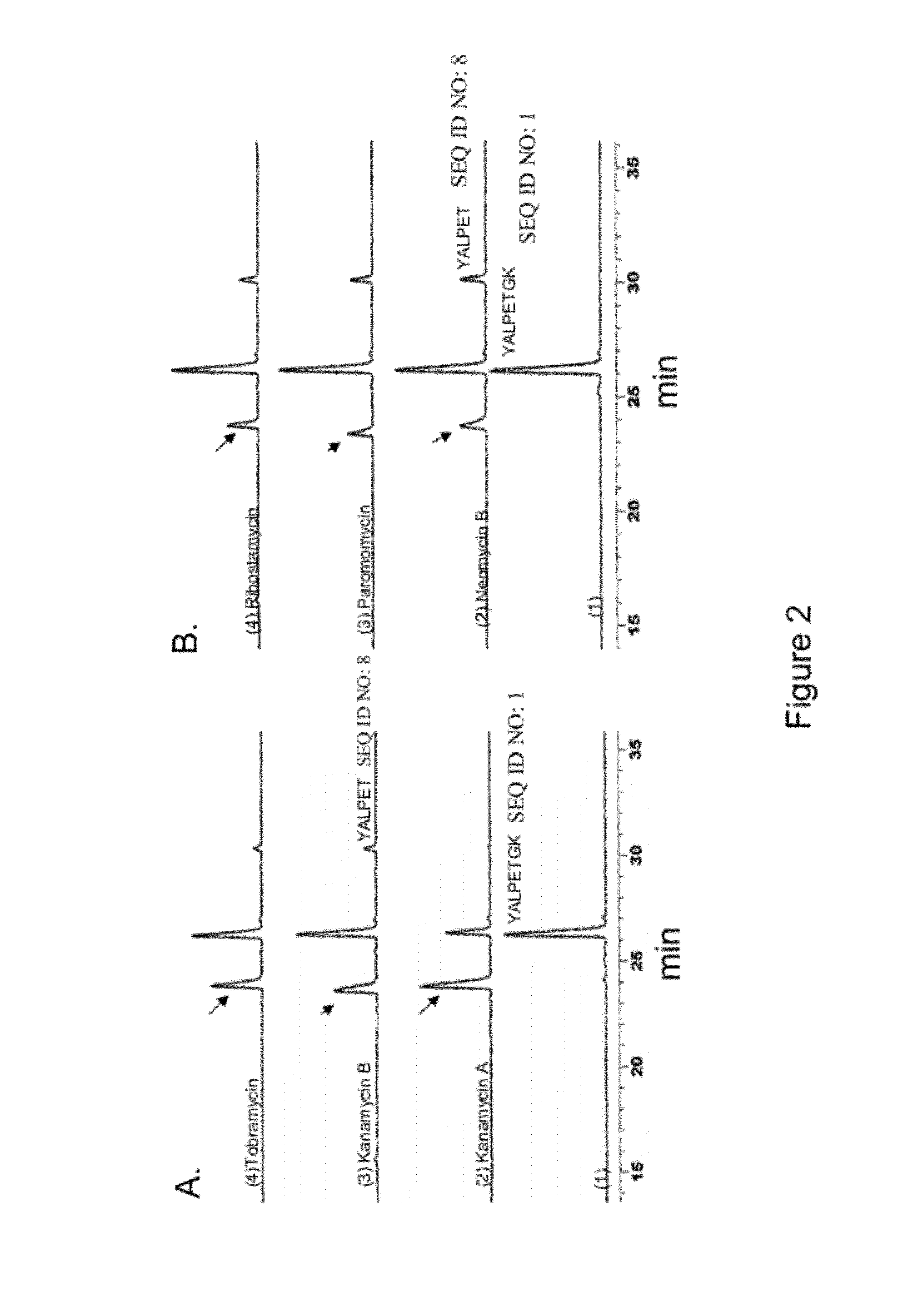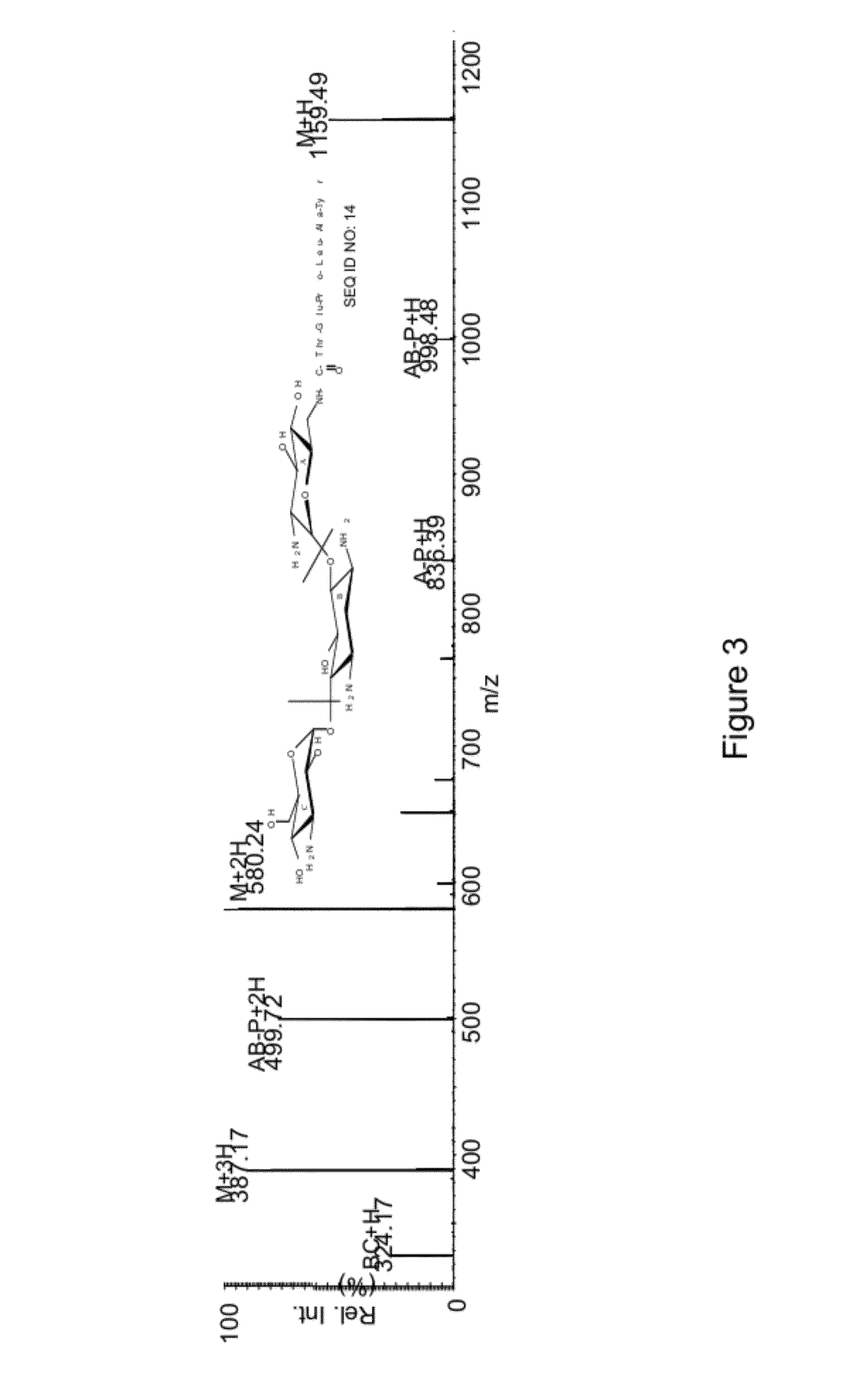Bioconjugates as therapeutic agent and synthesis thereof
a bioconjugate and therapeutic agent technology, applied in the field of bioconjugates, can solve the problems of reducing the therapeutic effect of glycoconjugate synthesis, requiring rather extensive protection of reactive functionalities, and a formidable task for glycoconjugate synthesis involving sugar and a polypeptid
- Summary
- Abstract
- Description
- Claims
- Application Information
AI Technical Summary
Benefits of technology
Problems solved by technology
Method used
Image
Examples
example 1
[0094]Cloning, Expression and Purification of Recombinant Sortase
[0095]The forward primer (SEQ ID NO: 6) and reverse primer (SEQ ID NO: 7) were used to amplify the SrtAΔ59 sequence corresponding to amino acids 60-204 from the genomic DNA of Staphylococcus aureus Mu50 strain.
[0096]
SEQ ID NO: 6FP 5′-GATATACATATGCAAGCTAAACCTCAAATTCCG-3′SEQ ID NO: 7RP5′-GTGGTGCTCGAGTTTGACTTCTGTAGCTACAAAGAT-3′
[0097]The resulting amplicon was ligated into pGEM-T Easy vector, transformed into Escherichia coli (E. coli) XL-I Blue competent cells and selected from Luria-Bertani (LB) agar plates containing 50 μg / ml ampicillin. The selected clones were verified by DNA sequencing for the presence of the desired construct. Plasmid DNA isolated from the positive clones was digested with NdeI and XhoI and ligated into pET23b vector for expressing a recombinant sortase with a C-terminal hexa-histidine tag. The ligation mixture was transformed into E. coli XLI Blue competent cells and selected from 50 μg / ml ampicill...
example 2
[0098]Synthesis of Peptides
[0099]The peptides were synthesized by standard solid phase synthesis protocols using Fmoc chemistry on a semi-automated peptide synthesizer. Wang resin preloaded with the desired amino acid was used as the starting material. The coupling and deprotection was monitored at every step by the Kaiser test for free amines. Before each coupling step and on completion of the synthesis, the N-terminal Fmoc group was removed using 20% piperidine (v / v in DMF). The peptides were cleaved from the resin and the side chains deprotected with a mixture containing trifluoro acetic acid (TFA), ethanediol, phenol, thioanisole and water (80:5:5:5:5, v / v). The resin was removed by filtration and the crude peptides were precipitated using cold diethyl ether. The peptides were purified to ≧98% by RPHPLC, lyophilized and stored at −70° C. The chemical identity of the peptides was checked by mass spectrometry. Other methods well known in the art may be used for the synthesis of pe...
example 3
[0100]Sortase-Catalyzed Peptide Ligation Reaction
[0101]The ligation of various substrate comprising LPXTG (SEQ ID NO: 11) peptide motif capable of recognizing sortase with biomolecule such as aminoglycoside, hexopyranose, polyamines, aminosugars, hydroxyamino acids, hydroxyamino acid esters, aminolipids and any other compound comprising these moieties was carried out in 0.3M Tris-acetate buffer (pH 7.5) containing 150 mM Nacl, 5 mM CaCl2, and 2 mM 2-mercaptoethanol. Each assay was set up in a 0.1 ml volume that contained 0.5 mM peptide, 1 mM sugar or antibiotics and 50 μM sortase. The reaction was allowed to proceed at 37° C. for 4-6 hours, quenched by addition of 20-fold excess of 0.1% trifluoroacetic acid (TFA) and analyzed by RPHPLC using acetonitrile-water-TFA solvent system. The reaction products were characterized by ESMS and / or MALDI-TOF mass spectrometry.
PUM
| Property | Measurement | Unit |
|---|---|---|
| pH | aaaaa | aaaaa |
| v/v | aaaaa | aaaaa |
| volume | aaaaa | aaaaa |
Abstract
Description
Claims
Application Information
 Login to View More
Login to View More - R&D
- Intellectual Property
- Life Sciences
- Materials
- Tech Scout
- Unparalleled Data Quality
- Higher Quality Content
- 60% Fewer Hallucinations
Browse by: Latest US Patents, China's latest patents, Technical Efficacy Thesaurus, Application Domain, Technology Topic, Popular Technical Reports.
© 2025 PatSnap. All rights reserved.Legal|Privacy policy|Modern Slavery Act Transparency Statement|Sitemap|About US| Contact US: help@patsnap.com



